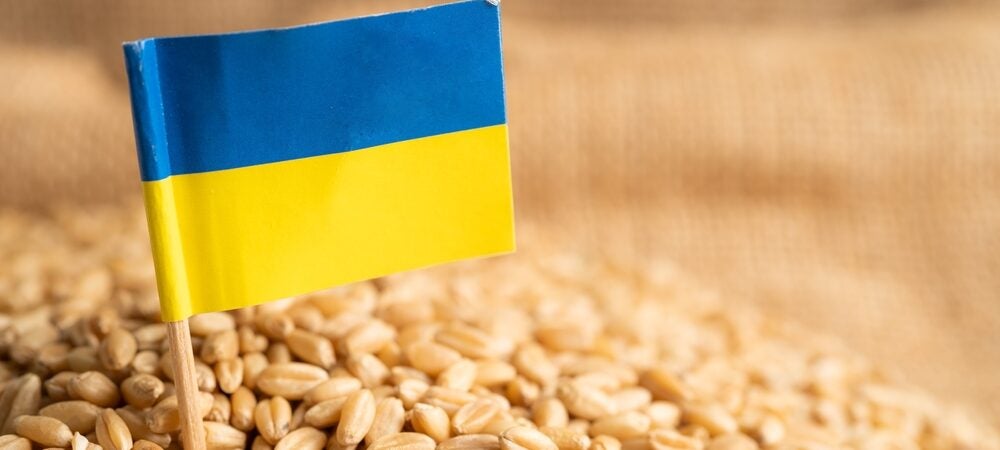The war in Ukraine is causing immense human suffering. At the same time, it has delivered another severe challenge to the global economy already strained by the impact of the COVID-19 pandemic. However, the multilateral trading system has withstood this disruption relatively well so far.
Global trade continued to increase in 2022, including for products greatly affected by the war, highlighting the resilience of the multilateral trading system. Early estimates suggest that trade growth was above the WTO trade forecast from April 2022 (around 3 per cent) and substantially higher than the more pessimistic predictions for 2022. This stability is also reflected in trade in supply chains, which grew by 4 per cent year-on-year in the second quarter of 2022, when measured in terms of trade in intermediate goods. Trade in products and by countries greatly affected by the war was remarkably resilient. Even in the short run and for unexpected disruptions, alternative suppliers filled in the gaps – at least for the majority of products affected by the conflict.
For the longer term, new simulations highlight the importance of strengthening the multilateral trading system. The latest simulations run by WTO economists modelling different scenarios for the global economy show that the gains from further multilateral liberalization are large. In line with this, the opportunity costs of decoupling into two rival blocs relative to more liberalization are estimated at 8.7 per cent of real income at the global level, varying between 6.4 per cent for developed countries, 10.1 per cent for developing countries and more than 11.3 per cent for least developed countries.
The benefits of reglobalization are not only about income gains but also about resilience and security for the supply of goods. The positive trade performance of countries dependent on imports from the conflict region was facilitated by their ability to switch their import supply to unaffected economies. For example, Ethiopia used to rely on Ukraine and Russia for 45 per cent of its wheat imports. The country reacted to the loss of most supplies from these two countries by increasing purchases from other producers, including the United States (shipments increased by 20 per cent in volume terms) and Argentina, which supplied 21 per cent of Ethiopia’s imported wheat, up from zero in the previous year.
Ukraine’s exports collapsed by 30 per cent in 2022 in value terms. The drop was relatively consistent across trade partners, although some neighbouring countries, such as Hungary and Poland, increased their imports from Ukraine. This was driven mostly by increased imports of agricultural products such as oilseeds, fats and oils, meat and dairy. Exports of cereals, which are central to the food security of many African economies, declined by 14.9 per cent, forcing these economies to adjust their trade patterns.
Increases in prices led Russia’s exports to expand by 15.6 per cent in value terms, but estimates suggest that Russia’s export volume might have slightly declined. The increase in Russia’s exports in value terms is driven mostly by goods in the primary sector such as fuels, fertilizers and cereals. The relatively limited increase in trade values in combination with the sharp increase in prices for these goods suggests a slight decline in export volume. In contrast, trade flows have fallen sharply for industrial goods, such as motor vehicles, pharmaceuticals and aircraft, where sanctions are likely to be particularly restrictive.
Prices rose for goods most affected by the war but by less than expected at the beginning of the war. Among these products, prices increased between 4.4 per cent for palladium – a key input in the production of catalytic converters in the automotive sector – and 24.2 per cent for maize. While these price increases are substantial, they are significantly lower than the gloomiest predictions. Simulations run by WTO economists in a scenario of cascading export restrictions on food forecast wheat prices increasing by up to 85 per cent in some low-income regions. However, the actual increase was 17 per cent.
The relative restraint by WTO members in imposing export restrictions likely played a key role in keeping price increases in check. The WTO’s latest trade monitoring report, covering mid-October 2021 to mid-October 2022, shows that regular (non-COVID-related) import-facilitating measures introduced by WTO members covered US$ 1,038.4 billion of trade, far exceeding the trade coverage of import-restrictive measures (US$ 163.5 billion). This, in combination with the limited price increases in grains, suggests that the success of the WTO’s 12th Ministerial Conference, which resulted in the Ministerial Declaration on the Emergency Response to Food Insecurity, has had a meaningful impact on reducing food insecurity.
oneyukr_eTo read the full publication, please click here.

